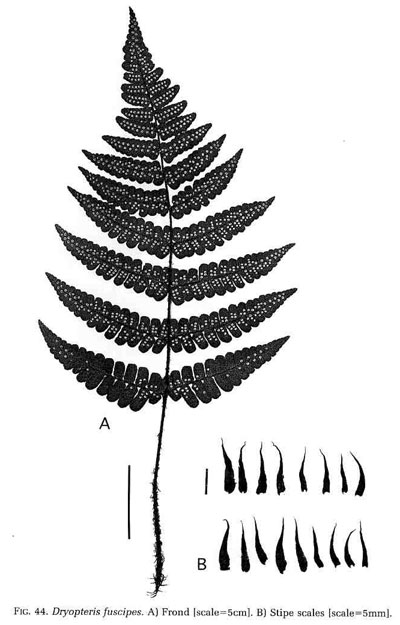| Dryopteris fuscipes | ||
|
Etymology
Fuscipes = dark-footed, Latin, refering to the brown scales at the stipe base.
Description
Rhizome: erect, massive, bearing several fronds in a tuft.
Frond: 100 cm high by 25 cm wide, evergreen, monomorphic, blade/stipe ratio: 3:2. Stipe: grooved, scales brown to reddish-brown, mostly confined to the stipe base, 1.5 cm long in basal ones, vascular bundles: 3-7 in a c-shaped pattern. Blade: 2-pinnate, triangular, herbaceous to somewhat leathery, early deciduous, dark, hair-like scales. Pinnae: 12 to 15 pair, lanceolate, subopposite above the base; pinnules oblong, less than 2.5 cm; costae bullate scales; margins entire to crenate; veins free, forked. Sori: round, in 1 row between midrib and margin, indusium: reniform, at a sinus, sporangia: brownish. Culture
Habitat: on forest floor in lowlands.
Distribution: Japan, Korea, China, Vietnam, Laos, Cambodia.
Hardy to -15�C, USDA Zone 7.
Synonyms
Dryopteris bipinnata C. Chr. Nephrodium fuscipes Hand.-Mazz. |
|
|
